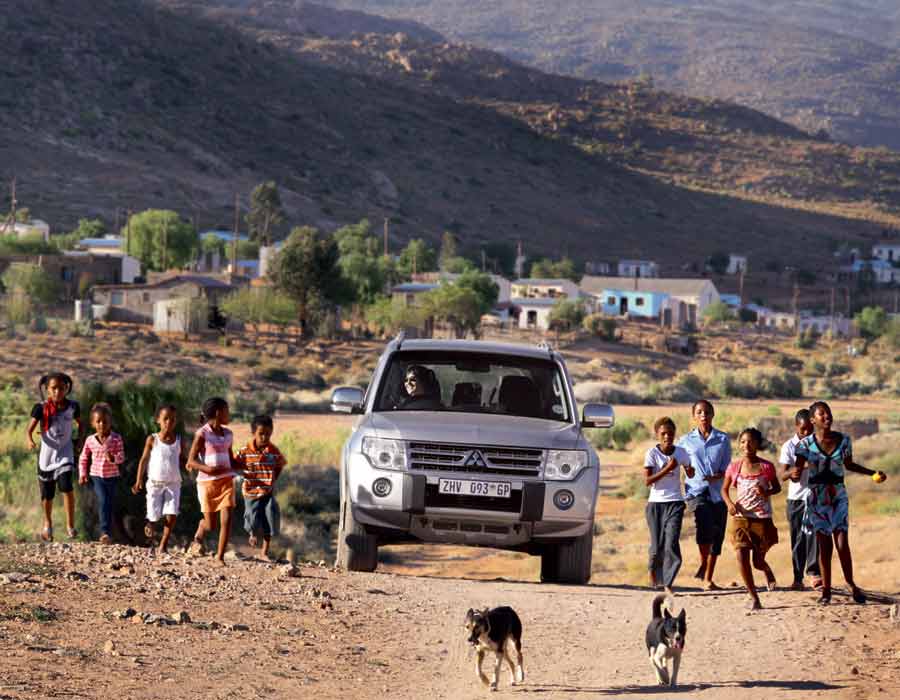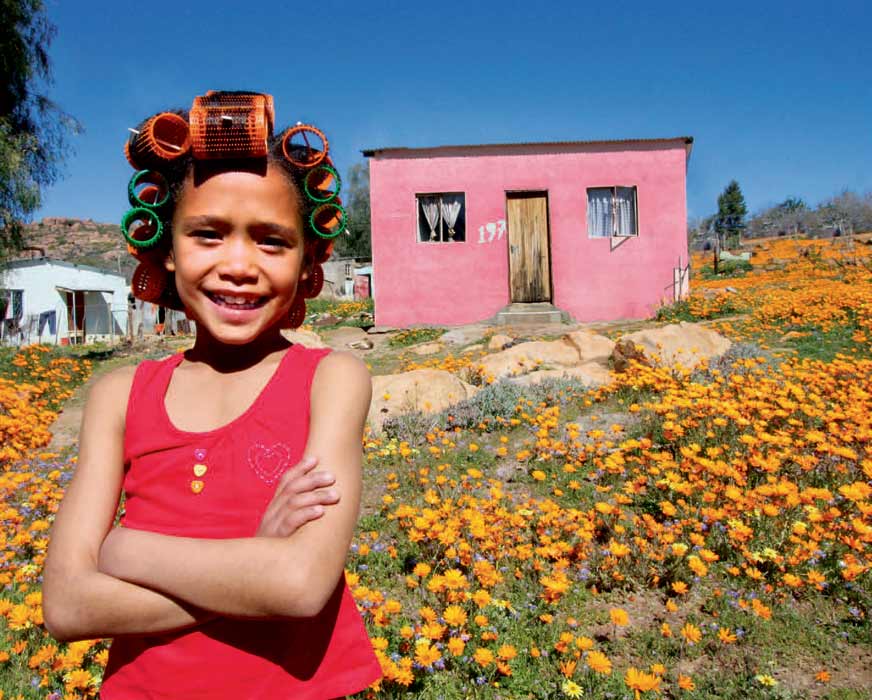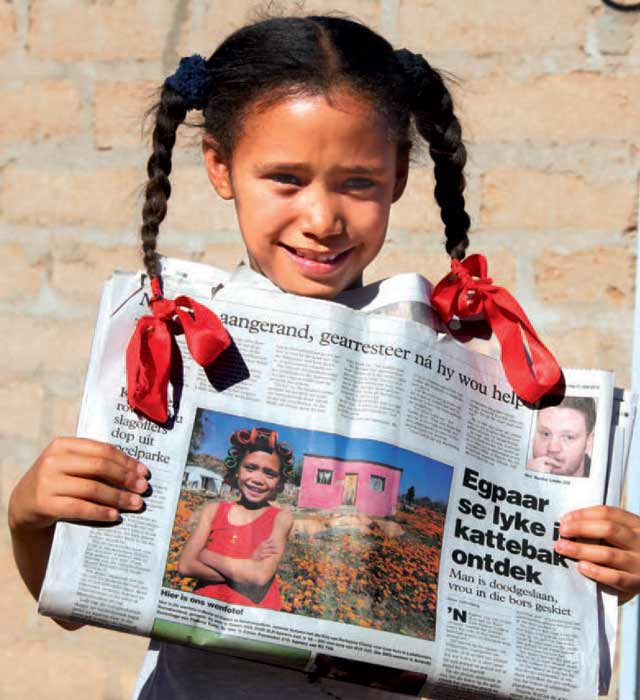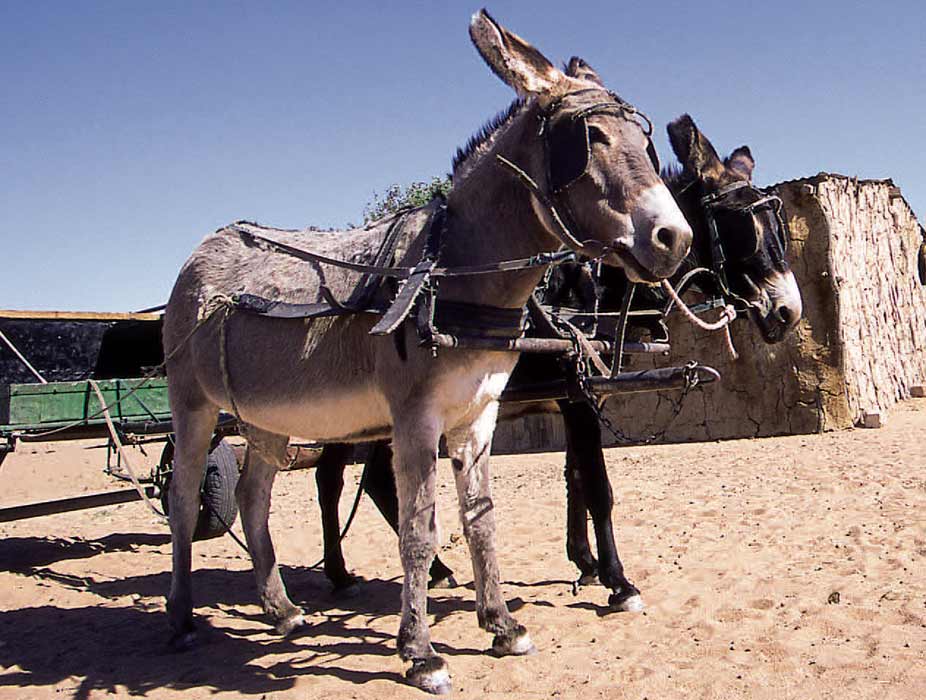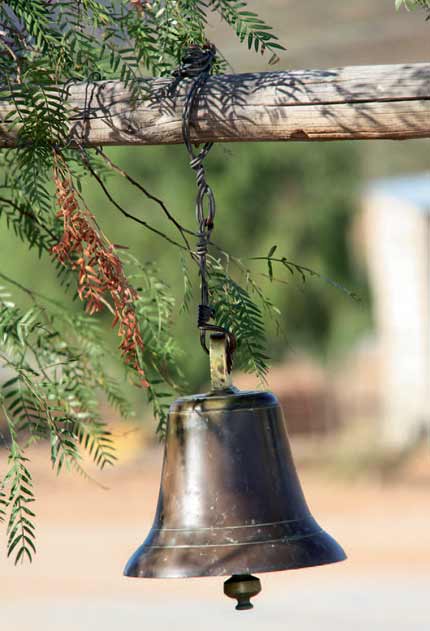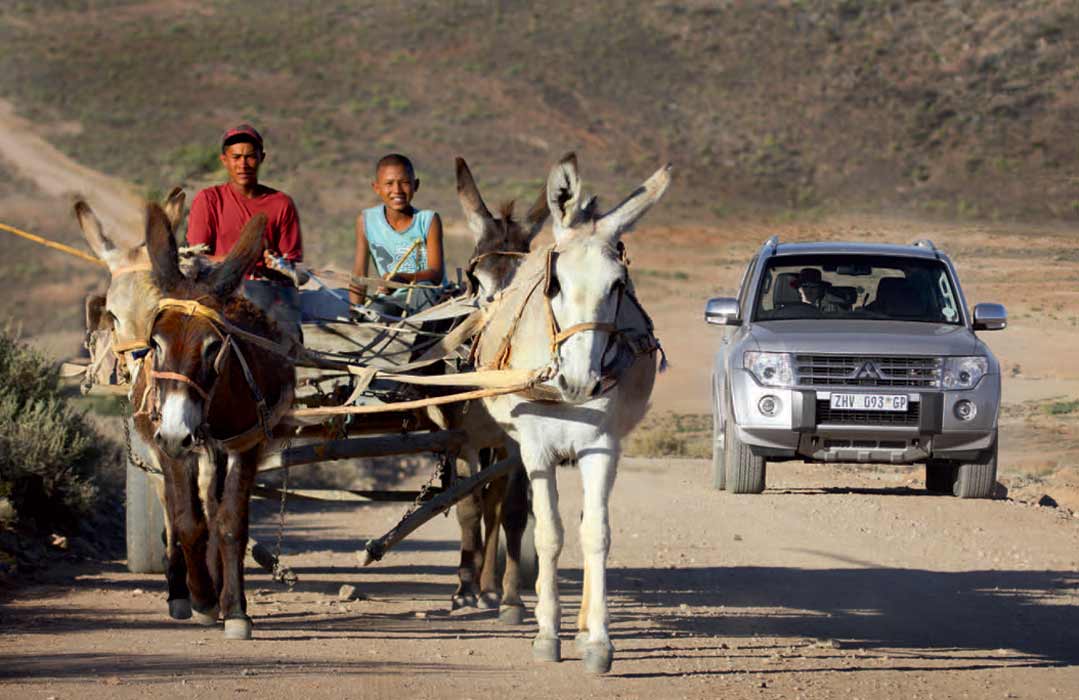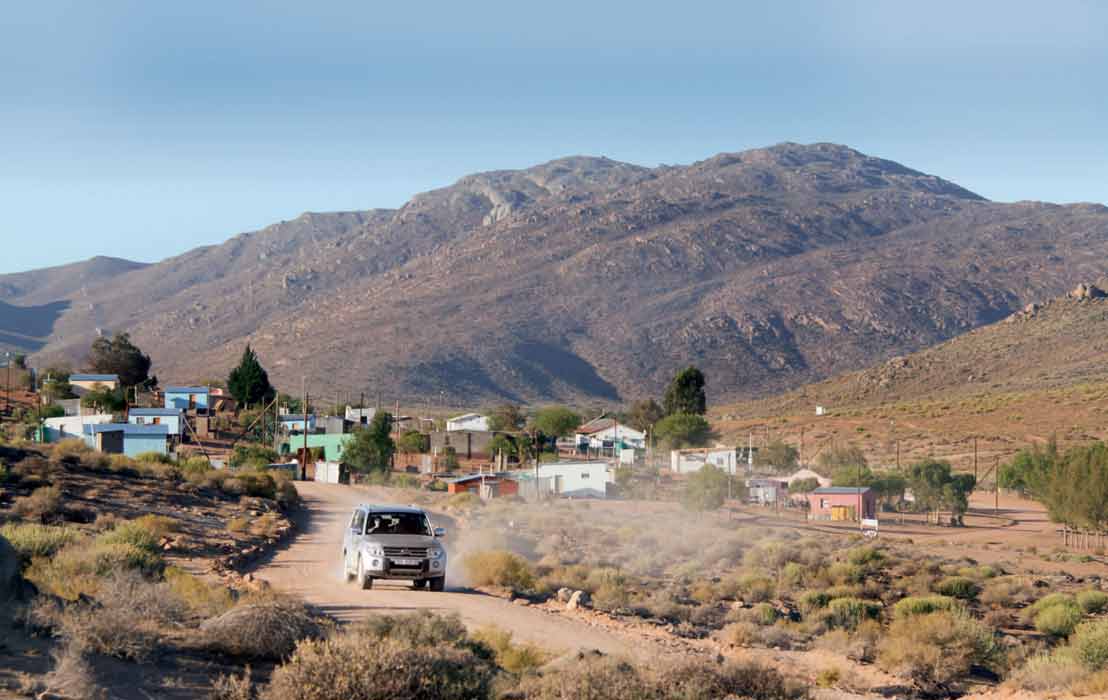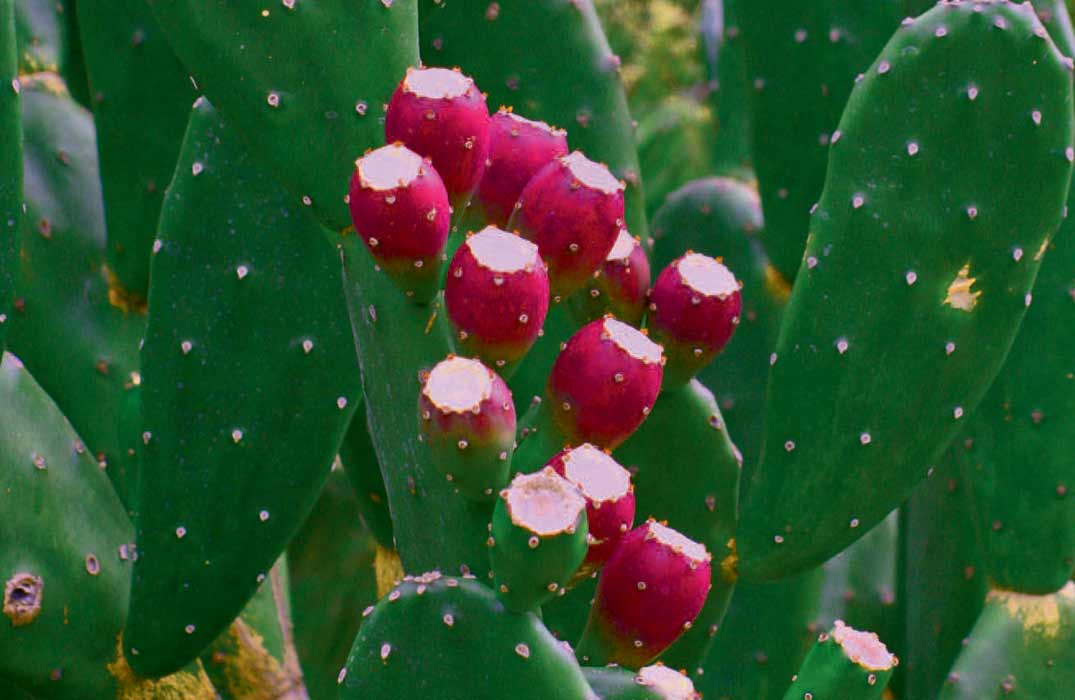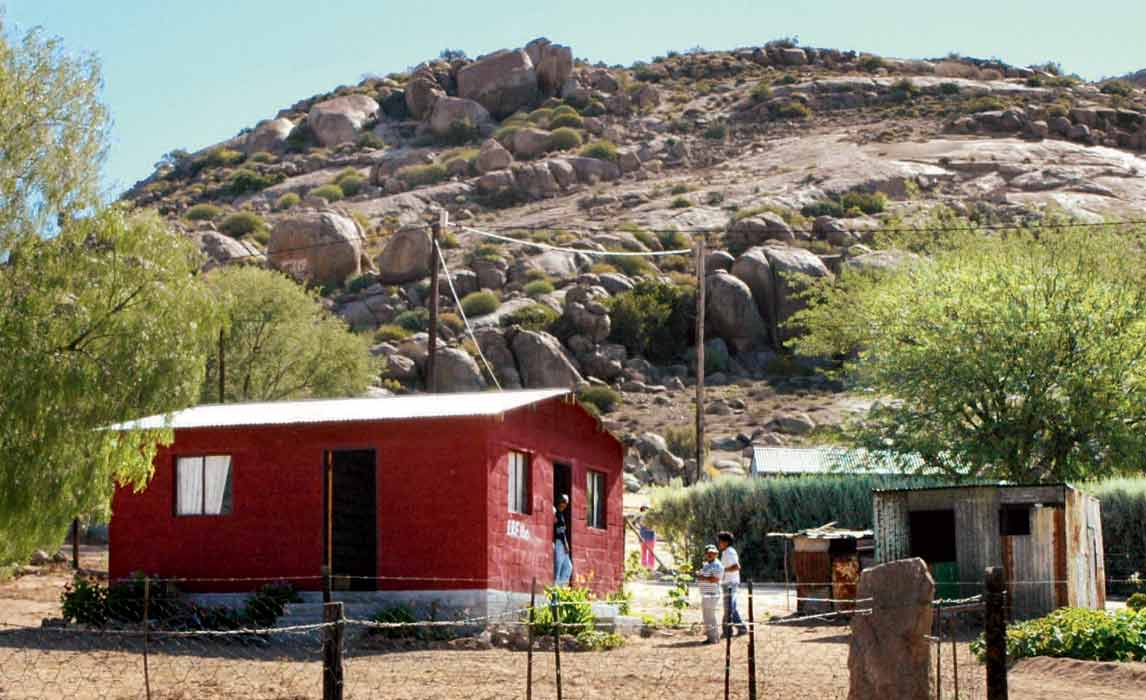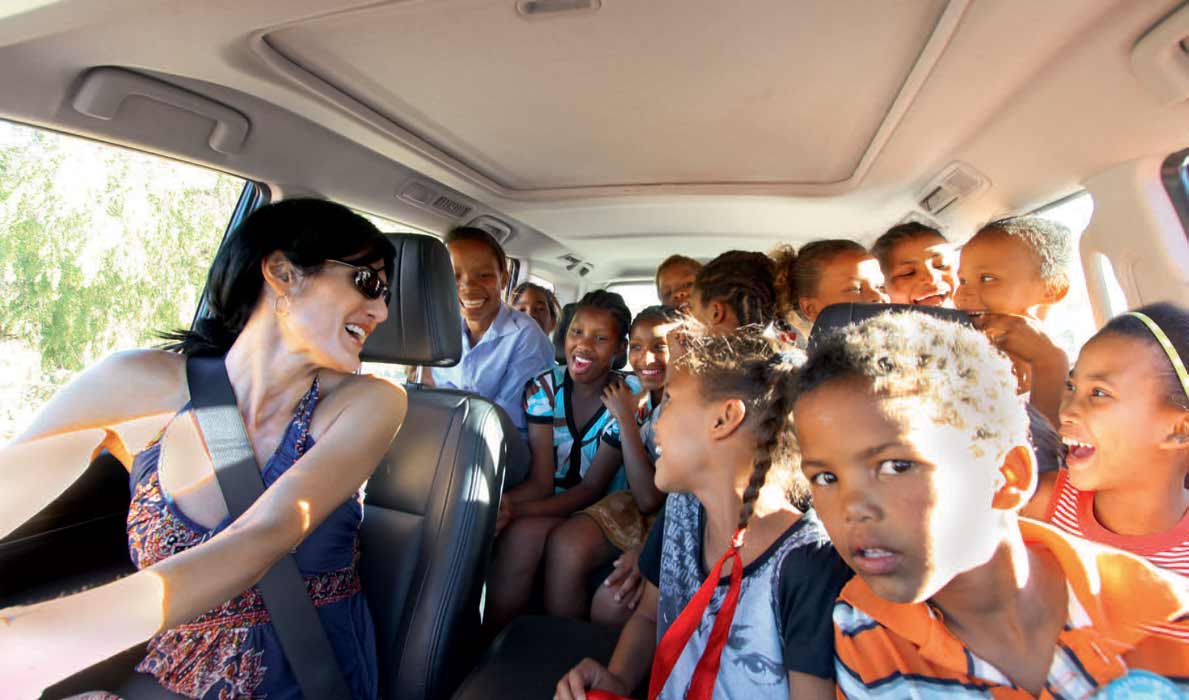When Leisure Wheels contributor Johnny Autumn entered a photographic competition on the spur of the moment, with a picture we had used with one of his articles, he did not think he’d win. He also never thought it would reunite him with the little girl in curlers who was ultimately responsible for the winning shot, and the prize of a R15 000 camera from the newspaper, Beeld. Leilani Basson accompanied Johnny on his mission to find eight-year-old Beryldene Cloete, to share his good fortune. They hit the road in a Mitsubishi Pajero for a desolate dorpie in Namaqualand, almost 1600km from Johannesburg.
Far, far away, where the elongated feet of the Kamies Mountains entwine with the earth, and patches of delicate yellow flowers force their way through the arid landscape, a seemingly endless road leads to Spoegrivier – our destinati on. It’s a long, dusty road. The only sign of life beyond the rocky horizon are the telephone poles that run from one koppie to the next.
Just when we are convinced that we have taken the wrong route, an ambulance appears from behind another stack of round-headed rocks, leaving a dusty tail. It silently fl ashes by.
A little farther on, a dreary young man holds his thumb in the air. He seems to be dusted with fi ne powder. Dull and almost lacklustre. It’s his mother that’s been taken by the ambulance. Stress, he says. When his mother had been stabilised, the paramedics dropped him at the side of the road. He wanted a lift back to Spoegrivier.
“Ja Mevrou, dis net hier annerkant die volgende ou bultjie.” (Yes, Ma’am, it’s just over the next hill.)
Hendrik Mente is a good guy. He is the Spoegrivier primary school’s sports coach. “Mar ek het al inni Kaap ok goeie rugby gan speel, Mevrou (But I have played good rugby in the Cape too, Ma’am). From the top of the hill, he points us to the little house next to the school where the girl in the photograph stays with her mom. “Daar is die skool mos,” he says, as if we’ve been there before. He hops out of the car. There is not a hint of moisture on his forehead. “God seën vir julle, Mevrou,” he says in way of thanks.
Welkom in Spoegrivier, announces a handwritten sign with a red Aids ribbon beneath it. Donkeys and donkey carts are part of the surreal picture in front of us. Spoegrivier is like a squatter camp in the middle of nowhere. The only difference is that some of the brick houses are painted in pastel colours, the plots are big and locals speak only Afrikaans. In these parts space is of no concern. Tired wire fences are held up by God’s grace. The outside toilets have their prime, sometimes elevated spots in the yard.
This is a down-to-earth community where life is life. The dog doing his business next to the fence while looking me right in the eye somehow confirms this. We’ve come a long way to meet eight-year-old Beryldene Cloete and her mom, Anna, a substi tute teacher at the Spoegrivier Primêre Skool. Living the isolated life they do, there is no way that Beryldene would have known about the photo of her being published three times in Gauteng’s Beeld newspaper, and the eventual hype about the winning photograph, portraying her in front of her family’s house when they still lived in Leliefontein, near Kamieskroon. Since he won the competition in July, Johnny has tried on and off to make contact with the little girl and her family. With the Christmas spirit speaking loudly in his heart, he persevered. Many calls were left unanswered. But with his final letter to the principal of Leliefontein’s school, things started falling into place.
Hi there, My name is Johnny Autumn and I work and live in Randburg (Johannesburg).
Last year, during the Namaqua flower season, I paid a visit to Leliefontein and photographed a cute little girl in front of her family home. She told me her name was Beryldene Cloete. In July of this year I entered a photographic competition in the Afrikaans newspaper, Beeld. My photo was judged to be the winning entry and my prize was a camera to the value of R15 000. Beryldene’s picture appeared in the paper three times – first when I entered the competition. Later it was published again when the ten best entries were chosen, and finally it appeared as the winning photo. It bothered me that Beryldene was oblivious to the ongoing excitement that was happening so far away from her. Many times I thought about the joy she would have experienced at seeing her picture and name in the paper but I realised that, being part of a poor community in Leliefontein, the chances of that happening were non-existent. I also felt that she should somehow share in my good fortune and I have tried all means to make contact with someone that may know of her. I phoned the school in Kamieskroon but the lady whom I spoke to never came back to me. This morning I decided to try another search and googled “Leliefontein Skool”, and came upon your number.
I was surprised to learn that there in fact was a school in Leliefontein as during my previous quest I was informed that all the children from Leliefontein were schooled in Kamieskroon. The good news is that I will be travelling to Leliefontein at the end of the month to meet up with Beryldene to tell her the good story. I want to bring along some gifts for her as well as a cash amount of R1000. But I feel hesitant about the cash. I would hate it if the money lands in the wrong hands and is squandered indiscriminately. I am hoping that you can let me have a telephone number of a responsible person close to her so that I can make arrangements prior to my visit to ensure the money is channelled correctly. I know that there is no cellphone coverage in Leliefontein but from what I read on the website I gather there must be a few Telkom lines. I am looking forward to your reply. See the photo I have included.
Regards
Johnny Autumn
From Leliefontein, the letter eventually made it to Spoegrivier Primêr, into the hands of Anna Cloete, Beryldene’s mom who was teaching there. She was ecstatic about the news, albeit a bit reluctant to believe it. Speaking to Johnny over the phone put her at ease and a meeting was arranged for late November in Spoegrivier, where the Cloete family now lives. Watchful eyes followed us from small stoeps, while yesteryear’s Terylene curtains were pulled away from grubby windows so residents could stare at the imposing Pajero going past in the late afternoon sun.
It was not difficult to guess where Beryldene lived. A girl with red ribbons in her pigtails was standing at the fence. She was wearing a new set of clothes – her silver sandals and tidy hair distinguishing her from her barefoot friends. She was shy at first. Johnny spent some time in the Cloete’s kitchen, telling Beryldene, Anna and Beryldene’s teacher, Desiree Mitchell, how it all happened. Although they had read the fax (one of the few things Beryldene has ever managed to read in English) the newspaper pages, with the full colour photograph of Beryldene in her curlers, brought the story to life. “Haai, maar dis pragtig, Meneer!” (My goodness, but this is beautiful, Sir), Anna could hardly contain herself.
“Die kind vra nou al vir die laaste paar dae knaend wanneer Oom Johnny dan nou kom.” (She’s been asking nonstop for days when Uncle Johnny is coming.) Shy and modest, but perceptibly proud, Beryldene posed for photos in her new clothes and the enlarged photograph in front of the house – at first with forced smiles and later with spontaneous laughter. Children from the neighbourhood filtered into the grassless yard as their curiosity got the better of them. They were all oohing and aahing over their ti mid little friend’s good fortune. There was even more oohing and aahing over the brutish silver Pajero – probably the first and last they’ll ever see in Spoegrivier.
Wanting this precious occasion to linger on, we agreed to take the children for a spin. They bundled into the Pajero – always space for another one. “Hololo, Halala,” they chanted at the top of their voices all the way up the koppie. Hysterical laughter rang out as the vehicle wound its way back into town again.
It was getting dark. We still had a long way to go to our overnight stop before returning to Johannesburg the following day. Johnny wrote a cheque for R1000 and hugged Beryldene goodbye. As we made our way to the car through the gateless entrance in the fence, Anna paused for a moment. ”Johnny, you know, as a single mom I didn’t know how I was going to buy this child the bicycle she so badly wanted for Christmas. She’s such a good child, you know. Quiet, creative, and she studies hard. Her older brother and sister are also my responsibility. I was praying so hard that something would happen. Two days later I was standing with your fax in my hand.” As we drove off, Anna stood behind her girl, hands resting on the small shoulders. Beryldene was still gleaming with joy. As Anna raised her hand to wave goodbye, to the cheers of the onlookers, she paused to fiddle with her glasses.
Spoegrivier is a dry, dusty place. There must have been something in her eye.
ABOUT SPOEGRIVIER
• The 110 year old town is nestled 22km west from the N7 and about 90km south of Springbok.
• The community exists of about 800 people, of which 117 are scholars in the Spoegrivier Methodiste Laerskool (pre-school to Grade 7), where they are taught by only three teachers.
• The oldest living resident is Jan Engelbrecht, aged 95.
• Entertainment is scarce. There are no game machines in the one cafe in town, so children rely on participation in sports for relaxation and socialisation.
• Every three to four years the Spoegrivier river gets flooded by winter rains, cutting off the town from the outside world for days at a time.
PAJERO– getting there in style
As far as 4x4s go, the Mitsubishi Pajero is one of the most underrated in the business. Still, there are thousands of Pajero owners who would shout from the highest mountain that the Pajero is absolutely the best 4×4. By far. In clocking more than 1000km in Mitsubishi’s latest Pajero, we were once again reminded why Pajero owners hold their vehicles in such high regard. The comfort, especially on the open road, is exemplary. The vehicle features an airy and upmarket cabin, comfortable seating and a laid-back character that helps gobble up the kilos in a most relaxing fashion. Ditto with dirt roads, where the four-wheel independent suspension soaks up the bad stuff , providing a safe, stable and comfortable ride.
The Pajero is equipped with Mitsubishi’s latest Super Select 4WD-II transfer case with active stability traction control (ASTC). Combined with 235mm ground clearance, the big Mitsu can certainly go the off -road mile. The Pajero’s 3,2-litre Di-D turbodiesel engine recently received an upgrade – the 3200cc four-cylinder unit now boasts 140 kW of power and 441 Nm of torque (up from 121 kW and 373 Nm). The top GLS model’s cabin is loaded with standard kit. Full leather upholstery, electric adjustment for just about everything that can be adjusted and climate control are standard.
Mitsubishi’s integrated communication system (MICS) adds to the open road driving experience. Featuring the latest Garmap navigation system, the MICS has a 6,5-inch High Definition TFT digital touch-screen monitor in the centre console. It is standard across the Pajero range. The system combines the radio, CD and iPod connectivity with voice prompts or through remote control, integrated with the controls on the steering wheel. It is connected to a topend Rockford Fosgate sound system (standard in the GLS), and can also play a CD, DVD, CD-R, VCD, MP3, JPG and MPEG4s. Lastly, the MICS system also features Bluetooth connectivity. The Mitsubishi Pajero 3.2Di-D GLS LWB retails for R533 900. There is a five-year/ 100 000km maintenance plan.
